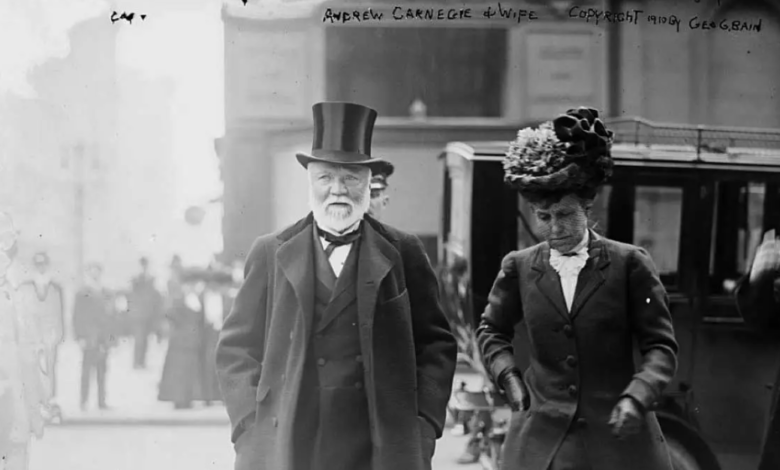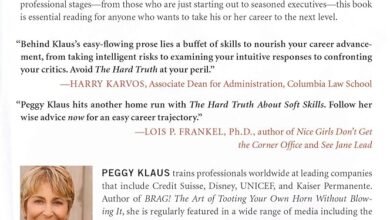
What Business Practices Led to Andrew Carnegie’s Monopoly Domination?
Andrew Carnegie’s ability to form a monopoly was primarily facilitated by his implementation of aggressive acquisition strategies and vertical integration practices in the steel industry. With these tactics, Carnegie swiftly obtained control over raw materials, transportation, and manufacturing, effectively monopolizing the steel market.
His relentless pursuit of cost-cutting measures and the development of innovative production techniques further solidified his dominance.
Contents
- 1 Early Life And Business Beginnings
- 2 Vertical Integration Strategy
- 3 Utilization Of Technology And Innovation
- 4 Aggressive Expansion And Market Control
- 5 Controversies And Labor Practices
- 6 Conclusion
- 7 Frequently Asked Questions Of What Business Practices Contributed Most To Andrew Carnegie’s Ability To Form A Monopoly?
- 7.1 How Did Andrew Carnegie Form A Monopoly In Business?
- 7.2 What Role Did Technology Play In Andrew Carnegie’s Monopoly?
- 7.3 How Did Andrew Carnegie Gain A Competitive Advantage Over Others?
- 7.4 What Was The Impact Of Andrew Carnegie’s Philanthropy On His Monopoly?
- 7.5 How Did Andrew Carnegie’s Business Practices Impact The Economy?
- 7.6 How Did Andrew Carnegie’s Monopoly Affect Other Businesses?
Early Life And Business Beginnings
Andrew Carnegie’s business practices that led to the formation of a monopoly included strategic vertical integration, aggressive cost-cutting measures, and astute investment in technology and infrastructure. His foresight and shrewd negotiations enabled him to control every aspect of the steel production process, solidifying his dominance in the industry.
Family Background
In order to understand how Andrew Carnegie was able to form a monopoly, it is important to delve into his early life and business beginnings. Family background played a significant role in shaping Carnegie’s future endeavors. He was born on November 25, 1835, in Dunfermline, Scotland, to a modest weaver’s family. From an early age, Carnegie was exposed to the world of business, as his family emigrated to the United States in search of better opportunities.
Start In The Railroad Industry
Carnegie’s entry into the railroad industry marked a crucial turning point in his business ventures. After arriving in the United States, Carnegie’s family settled in Allegheny City, Pennsylvania. At the age of 13, Carnegie took up a job as a bobbin boy in a cotton factory, earning a meager wage.
It was during this time that Carnegie’s potential began to shine. Recognizing his intelligence and diligence, Thomas A. Scott, superintendent of the Pennsylvania Railroad, offered Carnegie a position as a telegraph operator. This opportunity exposed Carnegie to the inner workings of the railroad industry and allowed him to cultivate valuable connections.
While working for the Pennsylvania Railroad, Carnegie’s thirst for knowledge grew stronger, leading him to immerse himself in self-education. He would spend countless hours reading books from Colonel James Anderson’s private library, gaining insights into various subjects, including business and finance.
With a growing understanding of the railroad industry and a hunger for success, Carnegie began investing his savings in various business enterprises. He started buying shares in local railroad companies and made strategic investments in oil and iron. These early ventures not only provided Carnegie with substantial returns but also allowed him to gain valuable experience in managing and growing businesses.
| Key Takeaways: |
|---|
| – Andrew Carnegie’s family background influenced his entrepreneurial spirit. |
| – His initial foray into the railroad industry as a telegraph operator proved instrumental in paving the way for future success. |
| – Carnegie’s self-education and strategic investments enabled his progression in the business world. |
Andrew Carnegie’s early life and business beginnings laid the foundation for his ability to form a monopoly. From his humble family background to his involvement in the railroad industry, Carnegie’s determination and strategic investments set him on a path to become one of the richest individuals in history.
Vertical Integration Strategy
Andrew Carnegie’s ability to form a monopoly was largely due to his implementation of the vertical integration strategy. This strategy involved controlling every aspect of the production process, from acquiring raw materials to controlling production processes. Let’s explore how each of these components contributed to Carnegie’s success.
Acquiring Raw Materials
One essential aspect of Carnegie’s vertical integration strategy was the acquisition of raw materials. Instead of relying on external suppliers, Carnegie sought to gain control over the entire supply chain. By doing so, he could reduce costs, ensure a steady supply of materials, and eliminate the risk of shortages.
One way Carnegie achieved this was through the purchase of iron and coal mines. Owning these mines allowed him to obtain a consistent supply of key raw materials. By securing these resources, Carnegie gained a competitive advantage over his rivals in the steel industry.
Again, Carnegie implemented efficient transportation systems to transport raw materials to his steel mills. By investing in railroads and shipping lines, he not only secured the means of transporting materials but also eliminated the dependence on external carriers. This integration of transportation further enhanced Carnegie’s control over the supply chain.
Controlling Production Processes
Another crucial component of Carnegie’s vertical integration strategy was the control over production processes. Instead of outsourcing various stages of production, Carnegie aimed to consolidate and streamline operations within his own facilities.
Carnegie invested heavily in his steel mills, incorporating advanced technology and machinery to increase efficiency and productivity. By controlling the entire production process under one roof, Carnegie was able to achieve economies of scale, reduce costs, and maintain high-quality standards.
Also, Carnegie implemented strict quality control measures to ensure the reliability and durability of his steel products. This commitment to quality not only helped establish Carnegie Steel as a trusted brand but also enabled him to command higher prices compared to his competitors.
By implementing a vertical integration strategy, Andrew Carnegie was able to form a monopoly in the steel industry. Acquiring raw materials and controlling production processes allowed him to streamline operations, reduce costs, and gain a competitive advantage. With this strategy, Carnegie not only controlled the entire supply chain but also ensured consistent quality, making it difficult for competitors to challenge his dominance.
Utilization Of Technology And Innovation
Implementing Efficient Processes
Andrew Carnegie’s ability to form a monopoly was significantly influenced by the implementation of efficient processes within his business operations. By prioritizing streamlined procedures and workflows, Carnegie was able to optimize productivity and maintain a competitive edge in the steel industry. This emphasis on efficiency allowed him to consolidate his control and monopolize the steel market, ultimately securing a dominant position within the industry.
Investing In Modern Equipment
Moreover, Carnegie’s astute investment in modern equipment and machinery played a pivotal role in reinforcing his monopoly. By leveraging cutting-edge technology and staying abreast of the latest innovations, Carnegie was able to enhance the quality and quantity of steel production, thereby outperforming his competitors and solidifying his market dominance. This strategic approach to modernization enabled him to corner the market, propelling his ascent to monopoly status.
Aggressive Expansion And Market Control
Andrew Carnegie’s monopoly formation was largely due to his aggressive expansion and tight market control. Through strategic business practices, he quickly expanded his empire and utilized techniques like vertical integration to dominate the steel industry. This allowed him to achieve unprecedented levels of control and profitability.
When it comes to Andrew Carnegie’s ability to form a monopoly, aggressive expansion and market control played a significant role. Two crucial aspects that contributed to this were acquisitions and mergers, as well as establishing a monopoly. Let’s dive into these aspects and understand how Carnegie harnessed them effectively.
Acquisitions And Mergers
Andrew Carnegie seized opportunities for growth by actively engaging in acquisitions and mergers. He was known for his determination to expand his empire. Carnegie’s strategy revolved around acquiring companies that complemented or competed with his existing ventures, allowing him to consolidate his control over different sectors of the industry. This aggressive approach helped him enhance his market share and eliminate potential competition.
By strategically purchasing various companies, Carnegie was able to wield significant influence in the steel industry, solidifying his position as a dominant force.
Establishing A Monopoly
With his ambition to dominate and control the steel industry, Andrew Carnegie focused on establishing a monopoly. By creating a near-monopoly, he was able to dictate prices and set standards, giving him an unrivaled advantage over competitors.
Carnegie’s vertical integration tactics, which involved owning every aspect of the steel production process from mining to distribution, enabled him to control costs and enhance efficiency. This integration allowed him to make strategic decisions, amass immense wealth, and exert tremendous influence over the market.
Controversies And Labor Practices
Andrew Carnegie’s ability to form a monopoly was greatly influenced by his controversial business practices and labor practices. His aggressive acquisition strategies, ruthless price-cutting, and harsh treatment of workers enabled him to gain control over the steel industry and eliminate competition, allowing him to establish a dominant monopoly.
Labor Exploitation
One of the key business practices that contributed to Andrew Carnegie’s ability to form a monopoly was his exploitation of labor. Carnegie’s steel empire was built on the backs of countless workers who labored long hours in dangerous conditions for meager pay. Workers in Carnegie’s steel mills often faced grueling schedules that lasted for 12 hours or more, with minimal breaks for rest or meals. Safety standards were virtually non-existent, leading to frequent accidents and injuries.
Again, Carnegie employed a controversial labor practice known as the “piece-rate system,” where workers were paid based on the number of products they produced. This incentivized rapid production at the expense of worker well-being, as employees pushed themselves to work faster and harder in order to earn a decent wage. This exploitative approach to labor allowed Carnegie to maximize his profits and dominate the steel industry.
Public Backlash And Criticisms
Andrew Carnegie’s business practices also attracted significant public backlash and criticisms. As news of the deplorable working conditions and low wages in his steel mills spread, Carnegie faced growing scrutiny from labor activists and reformers. These critics accused him of being a ruthless capitalist who prioritized profits over the well-being of his workers.
The public backlash against Carnegie reached its peak with the Homestead Strike of 1892, one of the most violent labor conflicts in American history. Faced with demands for higher wages and better working conditions, Carnegie responded by hiring armed detectives and Pinkerton agents to suppress the strike. The ensuing violence resulted in multiple deaths and further tarnished Carnegie’s reputation.
Also, Carnegie’s philanthropic endeavors, while commendable in their own right, were seen by some as mere attempts to buy goodwill and divert attention from his controversial labor practices. Critics argued that his efforts to establish libraries, educational institutions, and charitable foundations were a form of “robber baron philanthropy” designed to create a favorable public image.
Conclusion
To sum up, Andrew Carnegie’s monopoly was a result of his relentless pursuit of innovation, strategic acquisitions, and fierce competition. His aggressive business tactics and the ability to outmaneuver competitors played a pivotal role in shaping the steel industry. Moreover, his focus on cost efficiency and vertical integration set a strong foundation for his monopoly.
The combination of these practices ultimately led to Carnegie’s unrivaled domination of the steel market.
Frequently Asked Questions Of What Business Practices Contributed Most To Andrew Carnegie’s Ability To Form A Monopoly?
How Did Andrew Carnegie Form A Monopoly In Business?
Andrew Carnegie formed a monopoly in business by employing vertical integration and acquiring smaller competitors.
What Role Did Technology Play In Andrew Carnegie’s Monopoly?
Technology played a crucial role in Andrew Carnegie’s monopoly by enabling efficient production processes and expanding market reach.
How Did Andrew Carnegie Gain A Competitive Advantage Over Others?
Andrew Carnegie gained a competitive advantage by implementing cost-effective production methods and controlling key resources in his industry.
What Was The Impact Of Andrew Carnegie’s Philanthropy On His Monopoly?
Andrew Carnegie’s philanthropy helped to shape his monopoly by fostering goodwill and building strong public support for his business endeavors.
How Did Andrew Carnegie’s Business Practices Impact The Economy?
Andrew Carnegie’s business practices had a profound impact on the economy by increasing industrialization, creating jobs, and driving economic growth.
How Did Andrew Carnegie’s Monopoly Affect Other Businesses?
Andrew Carnegie’s monopoly had a significant impact on other businesses by limiting competition and forcing smaller companies to either merge or close down.



